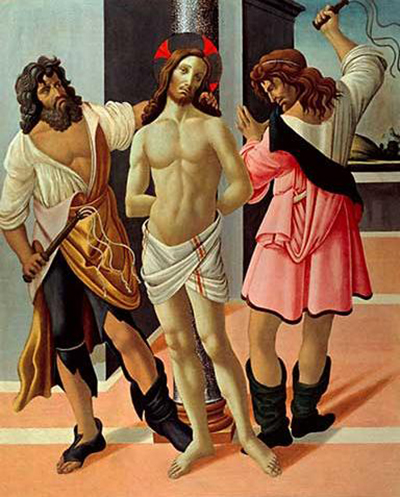This painting was completed in around 1490 and captures a famous scene from religious scripture. The piece was designed in egg tempera, a medium which dominated the Early Renaissance in all parts of Italy and was only later replaced by oils years later.
The Flagellation is sometimes known instead as Christ at the Column or the Scourging at the Pillar. It involves Christ being whipped by his captors and often he is depicted tied to a column, though different artists have captured this scene in different ways. There has also been a variety in the brutality displayed, with some not wanting to go into too much detail with regards the individual's suffering. You will notice that in Botticelli's version, so injuries are visible and his expression is one of sadness rather than anything more extreme. It was only later that audiences could cope with more brutal depictions and those was common in the centuries that followed. This Florentine chose to work with suggestion rather than literal imagery, showing one of the captors with his whip held menacingly in the air.
The scene here is actually fairly bright, with warm tones used for the ground tiles, with other elements of architecture placed behind the three figures. There is also a blue sky in the far distance, but this feels more like a city-setting, as opposed to many of the artist's other paintings in which rolling hills cover the background in more rural locations. The artist also gives attention to the clothing of each figure, as well as the muscular appearance of Christ's torso. This is an attractive artwork rather than worrying too much about incorporating too much emotion, which may underline why it is not considered one of the artist's most famous paintings. He regularly used assistants but in this relatively small piece, which is just over a metre in height, he most likely would have done it all on his own.
This painting can be found in the extensive collection of the Uffizi Gallery in Florence, Italy. That impressive institution serves the local Florentine art lovers with a wealth of historical culture dating back to even before the time of Botticelli. They also feature artists from elsewhere in the country and offer large amounts of both paintings and sculptures too. Those fortunate enough to visit this fine city should pencil in a trip to this gallery, with several other institutions also boasting similarly impressive collections which should also be seen.




